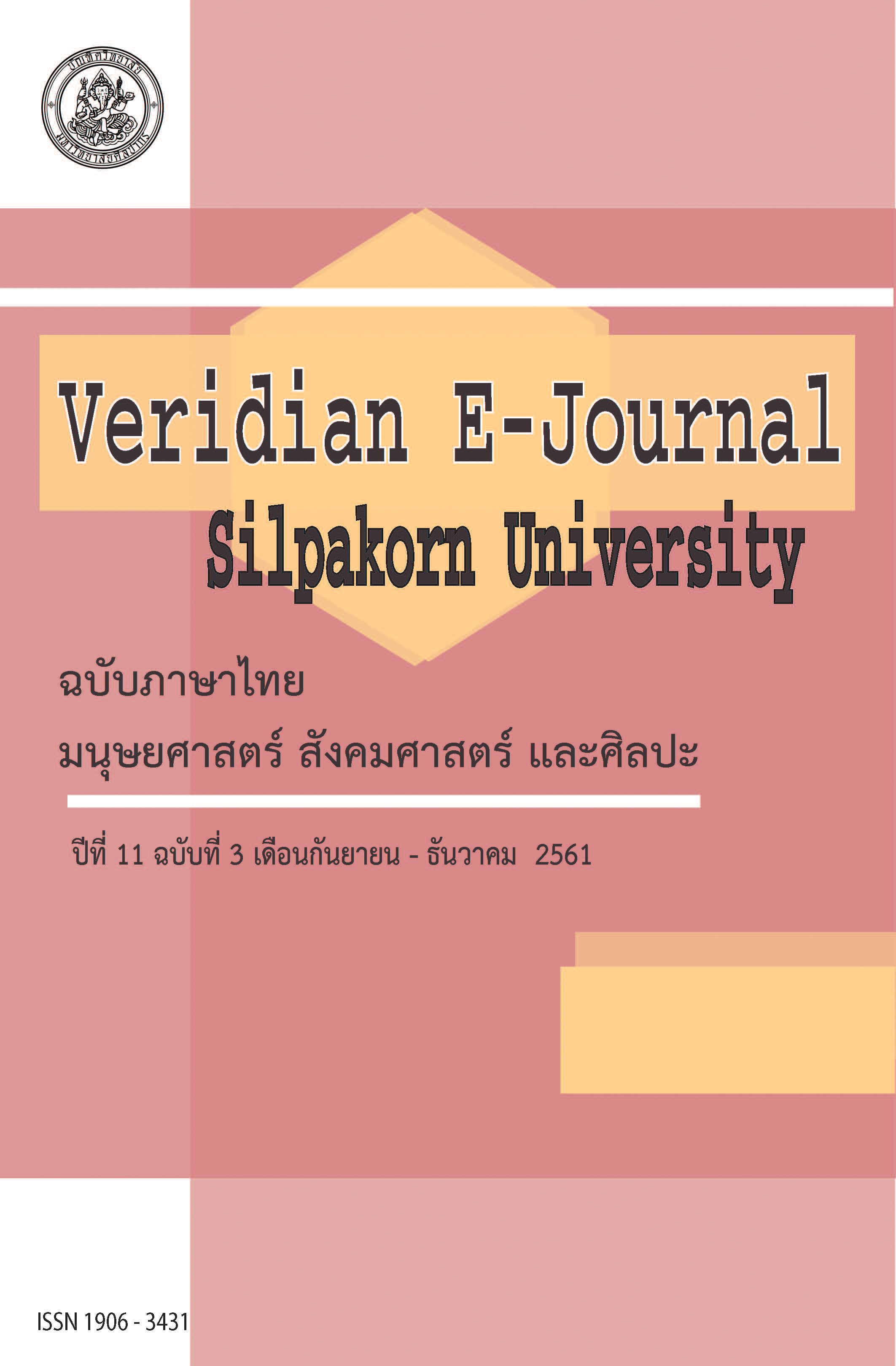การพัฒนาแบบจำลองสมการโครงสร้างการจัดการบริการเทคโนโลยีสารสนเทศ ในสถาบันอุดมศึกษาไทย (Development of Structural Equation Model for Information Technology Services Management in Thai Higher Education Institutions)
Main Article Content
Abstract
การศึกษานี้มีวัตถุประสงค์คือ 1) เพื่อศึกษาสภาพปัจจุบันของการจัดการบริการเทคโนโลยีสารสนเทศ ในสถาบันอุดมศึกษาไทย 2) เพื่อพัฒนาแบบจำลองสมการโครงสร้างการจัดการบริการเทคโนโลยีสารสนเทศ ในสถาบันอุดมศึกษาไทย และ 3) ตรวจสอบความสอดคล้องของแบบจำลองสมการโครงสร้างการจัดการบริการเทคโนโลยีสารสนเทศ ในสถาบันอุดมศึกษาไทยที่พัฒนาขึ้นกับข้อมูลเชิงประจักษ์ ประชากรที่ใช้การวิจัย คือ ข้าราชการหรือพนักงานในศูนย์คอมพิวเตอร์ หรือหน่วยงานหลักด้านการบริการเทคโนโลยีสารสนเทศ ของสถาบันอุดมศึกษาไทย 33 มหาวิทยาลัย ผู้วิจัยเก็บรวบรวมข้อมูลโดยใช้แบบประเมิน การพัฒนาแบบจำลองสมการเชิงโครงสร้าง และการวิเคราะห์ความสัมพันธ์ระหว่างตัวแปร
ผลการวิจัยพบว่า ระดับของการจัดการบริการเทคโนโลยีสารสนเทศ ภาวะผู้นำการเปลี่ยนแปลง การนำสู่การเปลี่ยนแปลง และการเป็นสมาชิกที่ดีขององค์การ อยู่ในระดับมาก มีค่าเฉลี่ยเท่ากับ 3.74, 3.84, 3.78 และ 3.88 ตามลำดับ ผลการวิเคราะห์แบบจำลองสมการโครงสร้าง พบว่า ภาวะผู้นำการเปลี่ยนแปลง มีอิทธิพลทางตรงต่อ การนำสู่การเปลี่ยนแปลง การเป็นสมาชิกที่ดีขององค์การ และการจัดการบริการเทคโนโลยีสารสนเทศ ค่าสัมประสิทธิ์อิทธิพลเท่ากับ 0.874, 0.205 และ 0.222 อย่างมีนัยสำคัญทางสถิติที่ระดับ 0.05, 0.01 และ 0.05 ส่วนการนำสู่การเปลี่ยนแปลง มีอิทธิพลทางตรงต่อการเป็นสมาชิกที่ดีขององค์การการเป็นสมาชิกที่ดีขององค์การ และการจัดการบริการเทคโนโลยีสารสนเทศ ค่าสัมประสิทธิ์อิทธิพล 0.653 และ 0.223 อย่างมีนัยสำคัญทางสถิติที่ระดับ 0.01 และ 0.05 การเป็นสมาชิกที่ดีขององค์การมีอิทธิพลทางตรงต่อการจัดการบริการเทคโนโลยีสารสนเทศ ค่าอิทธิพลทางตรง เท่ากับ 0.417 และมีนัยสำคัญทางสถิติที่ระดับนัยสำคัญ 0.01 โดยแบบจำลองสมการโครงสร้างมีความสอดคล้องกับข้อมูลเชิงประจักษ์ในระดับที่ยอมรับได้โดยมีค่า c2= 310.737, df = 151, p-value = 0.000, c2/df = 2.058, GFI = 0.901, AGFI = 0.834, CFI = 0.985, Standardized RMR = 0.008 และ RMSEA = 0.066.
This study aims to 1) Study the current state of information technology service management. In Thai higher education institutions. 2) To develop Structural Equation Model of management of information technology services in Thai higher education institutions 3) Consistency test Structural equation model developed for the information technology services management in Thai higher education institutions with empirical data. The research population is official or employees in the computer center or the main unit of information service in 33 Thai Universities. The researcher collected data using the evaluation form. The data were analyzed through the structural equation and analysis of relationships between variables.
The result found that; the information technology service management, the transformational leadership, the process of leading change and organizational behavior citizenship were high level with averages of 3.74, 3.84, 3.78 and 3.88 respectively. The SEM indicated that the transformational leadership had direct effect to the process of leading change the organizational behavior citizenship and the information technology service management; at the influence coefficients equal 0.874, 0.205 and 0.222 respectively, as statistically significant at 0.05, 0.01 and 0.05. The process of leading change had direct effect to the organizational behavior citizenship and the information technology service management; at the influence coefficients equal 0.653 and 0.223, as statistically significant at 0.01 and 0.05. Organizational behavior citizenship had direct effect to the information technology service management; at the influence coefficients equal 0.417, as statistically significant at 0.01. As well, the structural equation model is consistent with empirical data at acceptable levels c2= 310.737, df = 151, p= 0.000, c2/df = 2.058, GFI = 0.901, AGFI = 0.834, CFI = 0.985, Standardized RMR = 0.008, RMSEA = 0.066.
